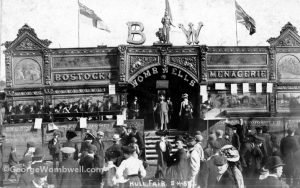Following an enquiry from a reader, I have gathered the stories as reported in newspapers together to outline the happenings on this dreadful night where four people, three of them children, were killed in a freak accident. As usual each newspaper report contradicts the others, but generally the whole story is presented here. There are also some fascinating facts that came out of the inquest such as carriges dimensions, etc. for those interested in such matters. Details can be provided on application.
The Story as per three newspaper reports:
Under the title Accident To Wombwell’s Menagerie – Four Lives Lost, it reports that when crowded with people in a field at Maes-y-dre, Holywell, Flintshire, a gale blew up and four caravans containing the animals were thrown onto the people burying them beneath it. About 20 people were pinned to the ground, some by the arm and some by the leg. Four people were killed – Mr B McBane 36, a keeper and who leaves a widow and three youths, belonging to the town; Edward Jones, 11 David Oxford, 13 and John Hughes, 14. An inquest returned a verdict Accidental Death. – Daily News, 1859
This story is corroborated by the Derby Mercury in 1859, except it adds that the keeper had stepped out of the lions’ cage and down some steps to describe the animals when the accident happened. The keeper is here named as Benjamin McBane, and the others as David Jones the son of a confectioner, John Hughes of Holloway near Holywell and David Oxford. It was rumoured that some of the beasts had escaped, but this was not the case. The coroner was Mr Peter Parry and the inquest was held at the King’s head Inn. Mr Wadsworth, travelling with Mrs Wombwell (George died in 1850), said the same safety precautions had been adopted as on other occasions and it had never happened before.
The North Wales Chronicle reported around the same time in 1859 that Edward Jones, David Jones, John Hughes and Benjamin McBane were all killed in the accident. It continues with a police witness at the inquest. One John Morris was on duty and explained Wombwell’s men had secured the caravans inside but not outside with props. They were secure he said.
Mr Robert Wadsworth, 27 years with Wombwell’s, was the manager that set up the show.
The canvas being tied to the carriages had pulled four carriages down in the high winds.
On the following Monday, two of the dead were buried (the keeper and David Jones) being interred in the new cemetary. They had been preceded by the band of the show, playing appropriate airs. We might estimate, the report continues, the number of spectators at from 400 to 500 persons.
NB: The difference between a keeper and a tamer is the latter did tricks with the beasts in the cages and keepers generally looked after the animals, feeding them, etc.
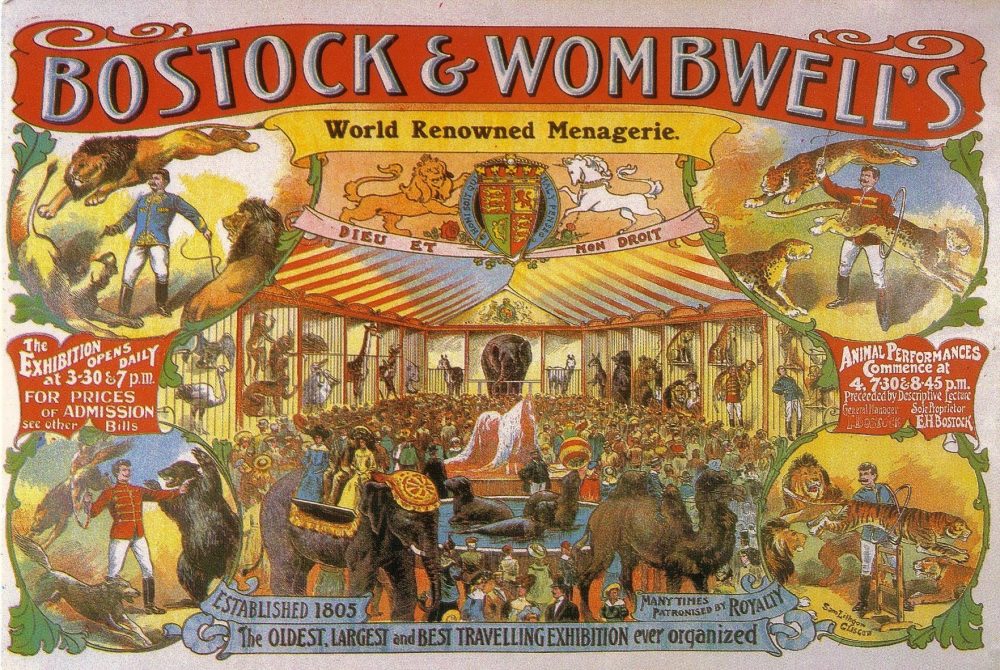
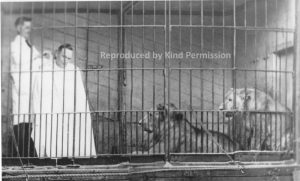 At least that is what I imagine the headlines in the local newspaper would have looked like if ever this photograph was published. Sent to me by the owner, apparently it shows the local barber known as Billy Weedon shaving the head the landlord of the George Hotel (Mr George Gay) in one of Bostock and Wombwell’s lion cages with two lions on the loose in the cage. The owner has kindly given permission for the publication on the blog. The date is said to be 5th July 1930 and must represent one of the last travelling menageries before they folded just two years later. Malmesbury is in Wiltshire, England.
At least that is what I imagine the headlines in the local newspaper would have looked like if ever this photograph was published. Sent to me by the owner, apparently it shows the local barber known as Billy Weedon shaving the head the landlord of the George Hotel (Mr George Gay) in one of Bostock and Wombwell’s lion cages with two lions on the loose in the cage. The owner has kindly given permission for the publication on the blog. The date is said to be 5th July 1930 and must represent one of the last travelling menageries before they folded just two years later. Malmesbury is in Wiltshire, England.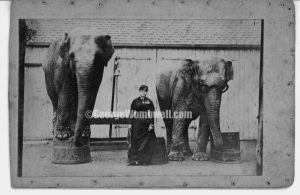
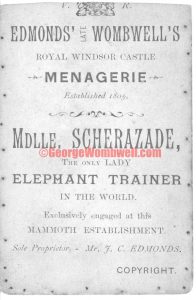
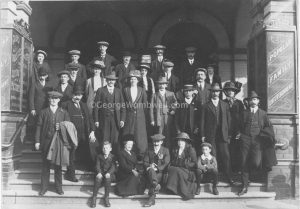
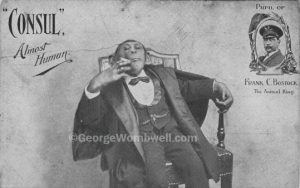 I remember London Zoo holding daily Chimpanzee tea parties. I certainly attended one (as
I remember London Zoo holding daily Chimpanzee tea parties. I certainly attended one (as 